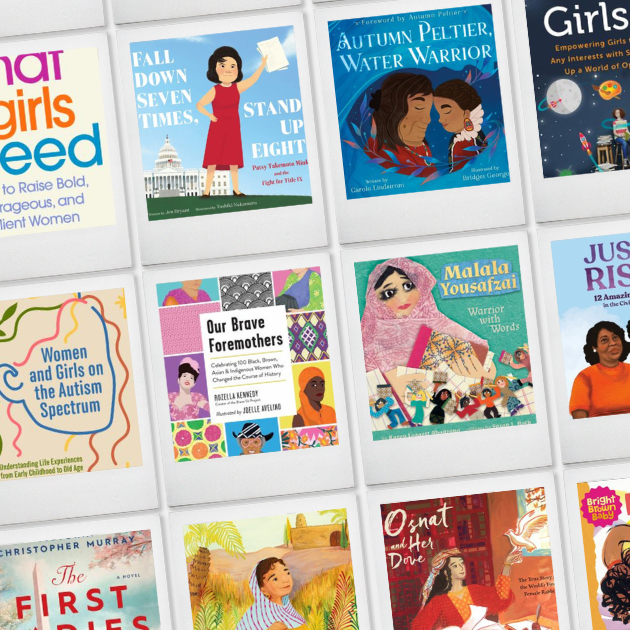We’re celebrating women who advocate for equity, diversity, and inclusion all month long. Check out the reads below!
Children’s titles
Fall Down Seven Times, Stand Up Eight: Patsy Takemoto Mink and the Fight for Title IX (age focus: 4 – 10 years)
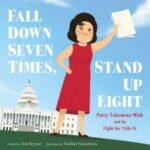 From a young age, Patsy Takemoto Mink learned that striving for goals came with challenges. But she also learned to never give up. As the Japanese proverb says: fall down seven times, stand up eight.That spirit helped Patsy through school. She wanted to become a doctor, but at the time, medical schools didn’t admit women. So Patsy carved her own path. She went to law school, ran for a seat in the United States Congress, and helped create Title IX, the law that requires federally funded schools to treat boys and girls equally. Although many people tried to knock her down, Patsy—a historic trailblazer who spent her life fighting for fairness—always got up again!
From a young age, Patsy Takemoto Mink learned that striving for goals came with challenges. But she also learned to never give up. As the Japanese proverb says: fall down seven times, stand up eight.That spirit helped Patsy through school. She wanted to become a doctor, but at the time, medical schools didn’t admit women. So Patsy carved her own path. She went to law school, ran for a seat in the United States Congress, and helped create Title IX, the law that requires federally funded schools to treat boys and girls equally. Although many people tried to knock her down, Patsy—a historic trailblazer who spent her life fighting for fairness—always got up again!
Revolutionary prudence wright: leading the minute women in the fight for independence (age focus: 6 – 9 years)
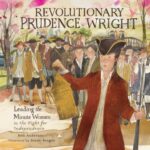 Recipient of a Kirkus Starred Review and Bank Street Best Book of the YearFrom the time she was a young girl, Prudence Wright “had a spark of independence.” The story begins with a brief recounting of various ways young Prudence defied traditional gender roles while growing up in Pepperell, Massachusetts Colony, including outperforming boys at school, hunting, fishing, and debating her brothers on political issues. As she grows older, Prudence fumes at King George III’s increasingly punitive laws, which include onerous taxes on British goods. In 1773, when the men of Pepperell vote to join the Colony’s resistance to British rule and begin training in militias, Prudence and the women in her quilting circle stage their own rebellion by dumping British tea into a bonfire on the town common and boycotting other British goods. As King George clamps down on protests, the colonists declare war. While most of Pepperell’s men are away fighting in skirmishes, Prudence discovers that Tory spies are planning to infiltrate the town and organizes the townswomen to defend it. She leads the lasses—armed and dressed in men’s clothing—in a dramatic ambush on Pepperell’s bridge, making revolutionary history as head of “the first-ever unit of minute women.”
Recipient of a Kirkus Starred Review and Bank Street Best Book of the YearFrom the time she was a young girl, Prudence Wright “had a spark of independence.” The story begins with a brief recounting of various ways young Prudence defied traditional gender roles while growing up in Pepperell, Massachusetts Colony, including outperforming boys at school, hunting, fishing, and debating her brothers on political issues. As she grows older, Prudence fumes at King George III’s increasingly punitive laws, which include onerous taxes on British goods. In 1773, when the men of Pepperell vote to join the Colony’s resistance to British rule and begin training in militias, Prudence and the women in her quilting circle stage their own rebellion by dumping British tea into a bonfire on the town common and boycotting other British goods. As King George clamps down on protests, the colonists declare war. While most of Pepperell’s men are away fighting in skirmishes, Prudence discovers that Tory spies are planning to infiltrate the town and organizes the townswomen to defend it. She leads the lasses—armed and dressed in men’s clothing—in a dramatic ambush on Pepperell’s bridge, making revolutionary history as head of “the first-ever unit of minute women.”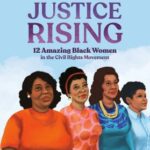
justice rising: 22 amazing black women in the civil rights movement (age focus: 4 – 8 years)
Black Caucus American Library Association’s Best of the Best 2023 ListThis vibrantly illustrated group biography geared toward elementary-school readers balances household names like Rosa Parks with lesser-known civil rights advocates like Dorothy Cotton for an engaging primer on the women of the movement. Each figure gets her own spread, a bright portrait by illustrator Holt, and a quick biographical sketch focusing on what earned her place in the collection. While many of the sketches may leave readers wanting more, their focus on the “why” rather than the basic biographical details allows the reader to fall right into step beside each woman. Russell-Brown’s writing style keeps the facts front and center while still evoking the feelings of each woman as they come to life on the page in 200 words or less, perfectly pitched to a child’s perspective. With back matter broken up for each figure and a welcoming layout that invites a binge reading or a slow exploration, this title will be a strong addition to history or biography collections, especially if supplemented by longer-form titles on the figures that particularly pique the interests of readers.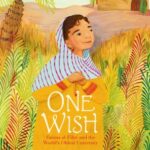
One Wish: Fatima al-Fihri and the World’s Oldest University (Age focus: 4 – 8 years)
A Horn Book selection for “Picture Book Biographies for Women’s History Month 2022”This lyrical account of the life of Fatima al-Fihri (c. 800–880 CE) surveys the eventual fulfillment of one woman ’s childhood dream to bolster her community by building a school. (It would eventually become the University of al-Qarawiyyin, “the oldest existing and continually operating university in the world,” per back matter.) Employing subtle refrains, such as “She stood tall, determined, and strong, / carrying her wish inside her,” Yuksel makes clear how al-Fihri’s dream influenced her goals throughout her life, and how her beliefs gave her the strength to pursue it despite personal tragedy, including her family’s flight from Tunisia to Morocco, where many sought refuge. In reds, tans, and greens, gouache and watercolor art by Quraishi employs finely rendered details, including patterned clothing and architecture. Advocating for persistence and education, this picture book adroitly demonstrates how al-Fihri’s Muslim faith inspired her community care.
Autumn peltier, water warrior (age focus: 4 – 10 years)
Recipient of a School Library Journal Starred ReviewHonoring the activism of a great aunt, a great niece, and the Indigenous women who are and have been speaking out on behalf of nibi, the word for water in Anishinaabe, this title calls on all readers to engage in this vital environmental work. Lindstrom (We Are Water Protectors) tells the story in poetic and powerful language in the voice of water itself. Readers are reminded of the vital role water plays in all our lives and the history of its degradation. Grandma Josephine (as she was known to many) spoke for the water and began walking miles and miles around the Great Lakes raising awareness for the protection of this precious gift. The call to action has reached to the Seventh Generation with Great-Niece Autumn Peltier, a young Anishinaabe Water Protector. Peltier has carried on the work of speaking out for the role of Indigenous people in climate discussions and has challenged world leaders to do better. Illustrations by George, who is also Anishinaabe, exquisitely capture the message of the story, especially conveying the concept of the seven generations for those in the audience unfamiliar with the future-forward planning. Back matter includes further information, suggested reading, viewing, and websites. Nibi asks at the conclusion, “What will you do for me?”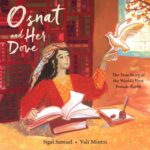
Osnat and her dove: the true story of the world’s first female rabbi (age focus: 4 – 8 years)
A Junior Library Guild Selection, Canadian Jewish Literary Award Winner, National Jewish Book Award Finalist, Evanston Public Library’s 101 Great Books for Kids, and School Library Journal Best of the YearOsnat Barzani (1590-1670) convinced her father, a rabbi, to teach her to read Hebrew, unusual as that was for a girl at the time, and her curious mind embraced Jewish learning. In lyrical prose (“Osnat loved the shapes of the Hebrew letters. One looked like a mysterious animal, and another, a creeping vine”), Samuel spins the story of a woman who studied Torah throughout her marriage and took over her husband’s yeshiva after his death. She incorporates the miraculous powers that some legends grant Barzani, mainly via a dove that she heals and that helps save the synagogue after a fire. Mintzi’s striking, mostly full-bleed illustrations (often luminous “gouache colors in layers”) show Osnat in the beautiful, sometimes dreamlike city of Mosul (in what is now Iraq). An author’s note gives background on the legends Samuel used to inspire her account of the woman whose writings don’t all survive, but who is “remembered locally as the first female rabbi and the first female Kurdish Jewish leader.”
Adult’s titles
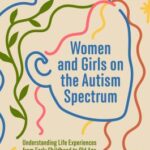
The difference that being female makes to the diagnosis, life and experiences of an autistic person is hugely significant. In this widely expanded second edition, Sarah Hendrickx combines the latest research with personal stories from girls and women on the autism spectrum to present a picture of their feelings, thoughts and experiences at each stage of their lives. Outlining the likely impact for autistic women and girls throughout their lifespan, Hendrickx surveys everything from diagnosis, childhood, education, adolescence, friendships and sexuality, to employment, pregnancy, parenting, and aging.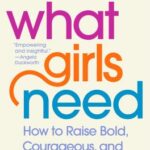
What Girls Need: how to raise bold, courageous, and resilient women
In summer training for the military, Porges was told by a senior officer she’d never cut it because she was a girl. In her first book, Porges describes conducting inte rviews with Taliban members, working in the White House counterterrorism department, and in the cybersecurity efforts under two presidents. She gives parents tools to teach girls to self-advocate, speak their mind, negotiate, persuade, and collaboratively solve problems.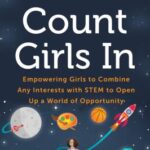 Count Girls in: Empowering Girls to Combine Any Interests With STEM to Open Up a World of OpportunityThere is a place for all girls and young women–not just the science fair winners and robotics club members–in STEM classes and careers. To succeed in science and tech fields today, girls don’t have to change who they are. A girl who combines her natural talents, interests, and dreams with STEM skills has a greater shot at a career she loves and a salary she deserves. The authors present compelling research in a conversational, accessible style and provide specific advice and takeaways for each stage of schooling from elementary school through college, followed by comprehensive STEM resources. This isn’t a book about raising competitive, test-acing girls in lab coats; this is about raising happy, confident girls who realize the world of opportunities before them
Count Girls in: Empowering Girls to Combine Any Interests With STEM to Open Up a World of OpportunityThere is a place for all girls and young women–not just the science fair winners and robotics club members–in STEM classes and careers. To succeed in science and tech fields today, girls don’t have to change who they are. A girl who combines her natural talents, interests, and dreams with STEM skills has a greater shot at a career she loves and a salary she deserves. The authors present compelling research in a conversational, accessible style and provide specific advice and takeaways for each stage of schooling from elementary school through college, followed by comprehensive STEM resources. This isn’t a book about raising competitive, test-acing girls in lab coats; this is about raising happy, confident girls who realize the world of opportunities before them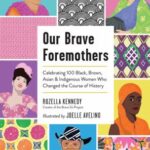 Our Brave Foremothers: Celebrating 100 Black, Brown, Asian, & Indigenous Women Who Changed the Course of HistoryFrom Etel Adnan to Mary Jones, Thelma Garcia Buchholdt to Pura Belpř to Zit̀kla-S̀, here are 100 women of color who left a lasting mark on United States history. Including both famous and little-known names, the thoughtful profiles and detailed portraits of these women herald their achievements and passions. Following each entry is a prompt that asks you to connect your life to theirs, an inspiring way to understand their influence and the power of their stories. To consider on a deeper level the devotedness of Clara Brown, the fearlessness of Jovita Ìdr, the guts of Grace Lee Boggs, or the selflessness of Martha Louise Morrow Foxx. And to be as brave as we each can be–and then beyond that.
Our Brave Foremothers: Celebrating 100 Black, Brown, Asian, & Indigenous Women Who Changed the Course of HistoryFrom Etel Adnan to Mary Jones, Thelma Garcia Buchholdt to Pura Belpř to Zit̀kla-S̀, here are 100 women of color who left a lasting mark on United States history. Including both famous and little-known names, the thoughtful profiles and detailed portraits of these women herald their achievements and passions. Following each entry is a prompt that asks you to connect your life to theirs, an inspiring way to understand their influence and the power of their stories. To consider on a deeper level the devotedness of Clara Brown, the fearlessness of Jovita Ìdr, the guts of Grace Lee Boggs, or the selflessness of Martha Louise Morrow Foxx. And to be as brave as we each can be–and then beyond that.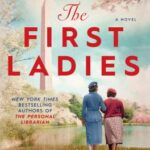 The First LadiesA narrative of the friendship between first lady Eleanor Roosevelt and Black educator Mary McLeod Bethune. The two women meet at a conference in 1927, when Eleanor runs a progressive girls’ school and Mary serves as president of a college. Eleanor, who is estranged from her husband, Franklin, because of his affair with Lucy Mercer, joins Mary’s campaign to stop lynching and secure greater civil rights for Black people. After Franklin becomes president, he stymies Eleanor and Mary’s efforts by taking advice from powerful allies who caution against upsetting a Southern Democratic base that supports segregation and resists anti-lynching efforts. Mary, dubbed “the first lady of struggle” by Eleanor, is confident, transactional, and unafraid of “audacious asks,” however, and persuades Eleanor to intercede with the president on Mary’s behalf. Although Mary accomplishes much for African Americans, including the appointment of the first Black Air Force general, she is accused of pandering to the Roosevelts by younger activists who want to march on Washington, D.C., when Franklin doesn’t live up to his promise of ending discrimination in the military. Eleanor intervenes again, convincing Franklin to issue an executive order. The heart of the story lies in its rich portrayal of such historical events and figures as the rise of fascism, WWII, the internment of Japanese Americans, and Billie Holiday. This is a potent tale of two crusading women’s accomplishments.
The First LadiesA narrative of the friendship between first lady Eleanor Roosevelt and Black educator Mary McLeod Bethune. The two women meet at a conference in 1927, when Eleanor runs a progressive girls’ school and Mary serves as president of a college. Eleanor, who is estranged from her husband, Franklin, because of his affair with Lucy Mercer, joins Mary’s campaign to stop lynching and secure greater civil rights for Black people. After Franklin becomes president, he stymies Eleanor and Mary’s efforts by taking advice from powerful allies who caution against upsetting a Southern Democratic base that supports segregation and resists anti-lynching efforts. Mary, dubbed “the first lady of struggle” by Eleanor, is confident, transactional, and unafraid of “audacious asks,” however, and persuades Eleanor to intercede with the president on Mary’s behalf. Although Mary accomplishes much for African Americans, including the appointment of the first Black Air Force general, she is accused of pandering to the Roosevelts by younger activists who want to march on Washington, D.C., when Franklin doesn’t live up to his promise of ending discrimination in the military. Eleanor intervenes again, convincing Franklin to issue an executive order. The heart of the story lies in its rich portrayal of such historical events and figures as the rise of fascism, WWII, the internment of Japanese Americans, and Billie Holiday. This is a potent tale of two crusading women’s accomplishments.
Other resources
- 👩🏼🚀🦸♀👷♀👩🏽🦱 Celebrate Women’s History Month with PBS KIDS! 👩🔬👩🏻🍳🧕👩🏼🎨
- Our Proud Heritage by NAEYC: Our Proud Heritage, edited by Edna Ranck, shares insights from the history of early childhood education to help educators develop teaching goals and objectives today. By considering the origins of ideas and programs, we can better understand the present and make greater progress in the early childhood field.
- Celebrating Black home-based providers and their continuing legacy of communal care in their communities by Home Grown Child Care: “Black early educators and care providers’ kinwork or ‘community mothering’ is a sort of activism that maintains Black culture, cultivates resilience against oppression and social disenfranchisement, and empowers the next generation,” she wrote. “This work is a continuation of Black women’s legacy of going beyond child care to engage in community activism and address the diverse needs of Black children and families.”
- Teachers dismantle gender stereotypes with GRP4ECE toolkit by VVOB: VVOB, Forum for African Women Educationalists (FAWE) and public education partners in Rwanda, South Africa and Zambia have joined forces to develop a practical approach to gender-responsive pedagogy for early childhood education (GRP4ECE). The GRP4ECE toolkit empowers preschool teachers and school leaders to challenge gender stereotypes where they can do the most harm, but where they can also be challenged most effectively: the classroom. An environment free of stereotypes lays a firm foundation for young children to grow up freely exploring and developing their unique interests and talents. Check out the story to learn more and download the toolkit for yourself.
- Webinar: Moving beyond gender parity — why is gender important in early childhood education? By UNICEF Education: In this webinar from 2022, UNICEF and Plan International collaborate to advocate for gender-responsive and transformative policies and practices in the pre-primary education subsector, recognizing the potential for this to address discriminatory and limiting gender stereotypes, roles, and norms and advance gender equality. This webinar will shine a spotlight on why gender responsive and gender transformative ECE is so important, and what that means for programming and influencing.
By Jennie Walker Knoot
